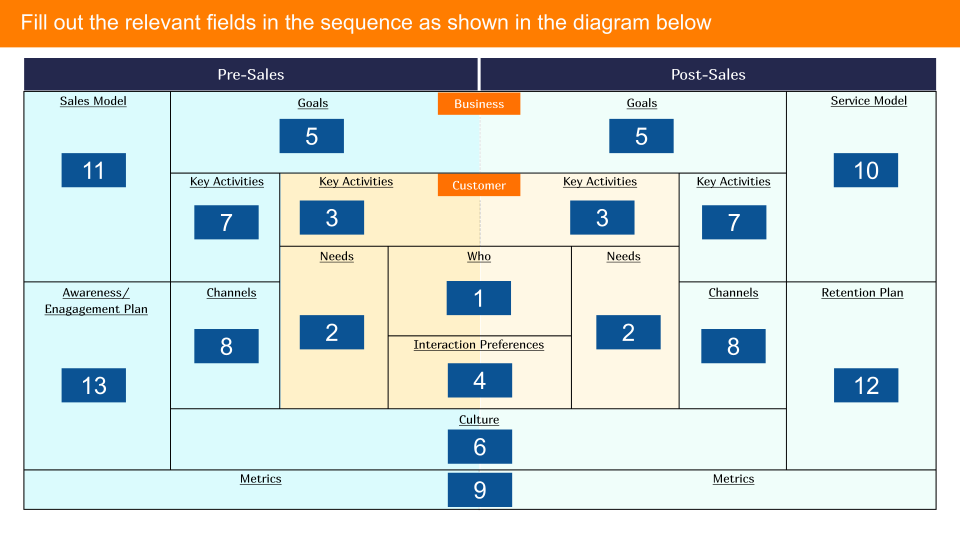
Unify your CX vision with practical steps. Organize strategies and actions that bring the customer experience you envision to life.
How to Use This Template
Start by filling in customer details first, as understanding your customers is critical for shaping your overall strategy. Begin from the center (customer-related details) and move outward to business activities and goals. Follow the numbered sequence as follows to fill out the canvas systematically:

1) Who (Customer Profile):
Start by identifying the target customer (e.g., freelance designers). Define their demographics, profession, and key characteristics.
2) Customer Needs:
Outline the primary needs and pain points of your customers, both during the pre-sales (e.g., access to tool information) and post-sales phases (e.g., performance and speed).
3) Key Activities (Customer):
Describe the activities your customer performs when interacting with your product, such as researching options, signing up for trials, and using your product post-purchase.
4) Interaction Preferences:
Describe the activities your customer performs when interacting with your product, such as researching options, signing up for trials, and using your product post-purchase.
5) Business Goals:
Specify your business goals for both pre-sales and post-sales periods. For example, pre-sales might focus on increasing awareness, while post-sales could focus on customer retention.
6) Culture:
Define your business culture, particularly how it supports customer experience. For instance, promoting creativity and user-driven feedback could be a key cultural value.
7) Key Activities (Business):
List the actions your business needs to take to support customers, such as running targeted ads, providing onboarding, or hosting educational webinars.
8) Channels:
Specify the platforms and methods you’ll use to engage with customers. Pre-sales channels may include social media or email campaigns, while post-sales channels could involve support forums or newsletters.
9) Metrics:
Identify the key performance metrics to track for both pre-sales (e.g., website engagement, conversion rates) and post-sales (e.g., customer satisfaction scores, churn rates).
10) Service Model:
Define the post-sales support structure, such as offering 24/7 online help, detailed tutorials, and a dedicated customer manager.
11) Sales Model:
Outline how you’ll sell your product in the pre-sales phase. This can include free trials, personalized recommendations, or value-added educational resources.
12) Retention Plan:
Plan how you will retain customers post-sale, which could include offering discounts for long-term use, sending regular content updates, or creating user communities.
13) Awareness/Engagement Plan:
Develop strategies to create awareness about your product, such as utilizing social media, targeted ads, and content marketing aimed at your target customer base.

